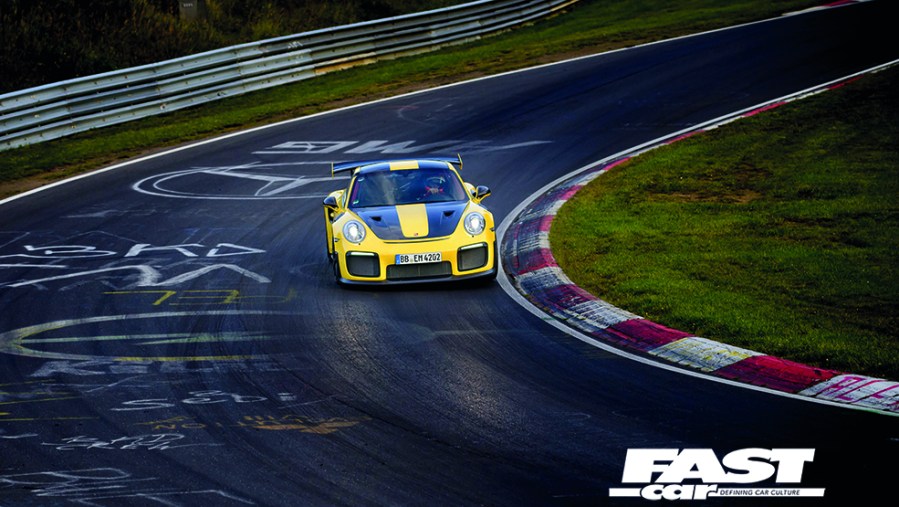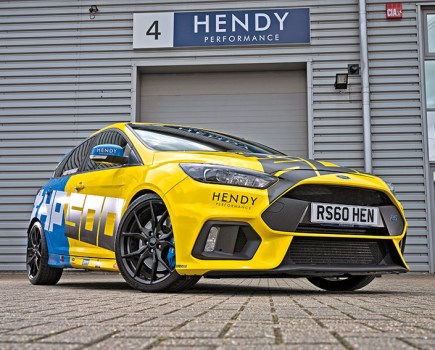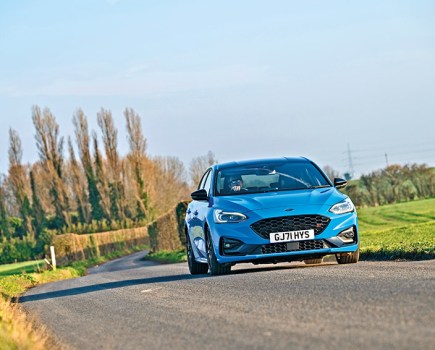This production, street legal 911, has more power than the dominating, Le Mans winning Group C racing prototype, the 956. And it’s rear-wheel drive. The fastest, certainly, but does all that power make this 911 GT2 RS the best 911 ever built, or one step too far? We attempt to find out from behind the wheel.
The last car I crashed was a Porsche 911 GT2 RS, about seven years ago. I have no excuses but you’re going to get them anyway. It was the previous car with its perky 611bhp engine and on some army base in Germany a photographer was asking me to drift it through a corner. Again and again and again. Because of the car’s nature and its somewhat spiky power delivery it’s fair to say I was pleased to hear him say, ‘this will be the last one.’ But I know photographers and I know how easily one becomes ten, so I decided to deliver a drift of such drama he couldn’t possibly ask for another. You can guess the rest. The car wasn’t badly damaged, indeed it resumed its duties later that day, but as the on-board footage attests I was less than pleased with the car and even more so with myself.
So, what would one with nearly 700hp be like? And when all was said and done, would this 911 GT2 RS actually offer a better driving experience than a GT3 RS? If it did, it would be the first 911 GT2 RS of any kind to do so.
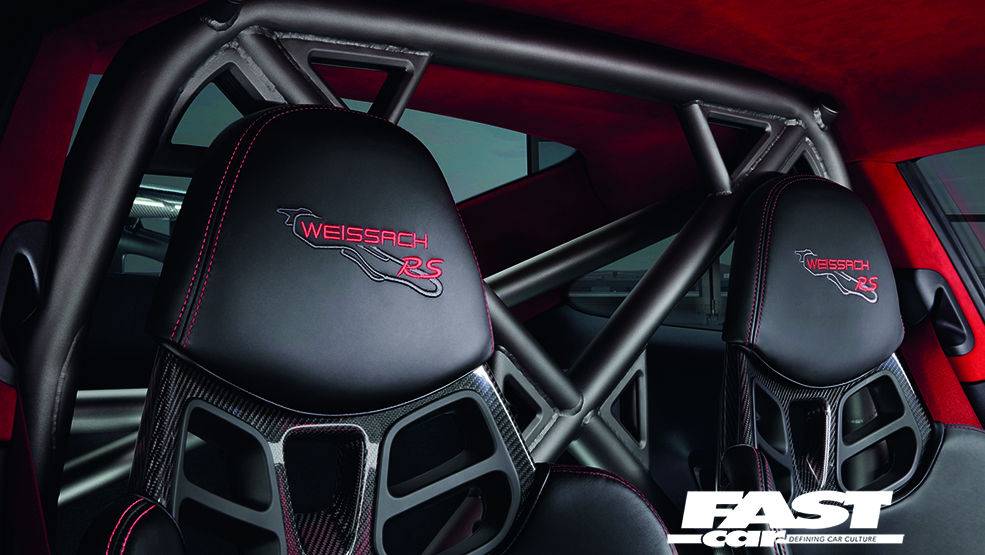
This is a car of so many superlatives, it’s hard to see past them at first. It’s interesting to think too that the output of this fully homologated street legal car now exceeds that of the Group C 956 with which Porsche started its era of unparalleled sports car dominance by winning Le Mans in 1982. It will hit 62mph from rest in 2.8secs, which is pretty absurd for any production car, but one with just two driven wheels? I expect it is unprecedented. The old 911 GT2 RS needed 3.5secs to do the same. It will also do 211mph.
But the figure which makes you want to go and lie down in a dark room, especially if you’re about to drive one as fast as you can, is around that fearsome old Nürburgring race track it is 31 seconds per lap quicker than the car it replaces. Half a minute in approximate other words. It sounds like witchcraft.
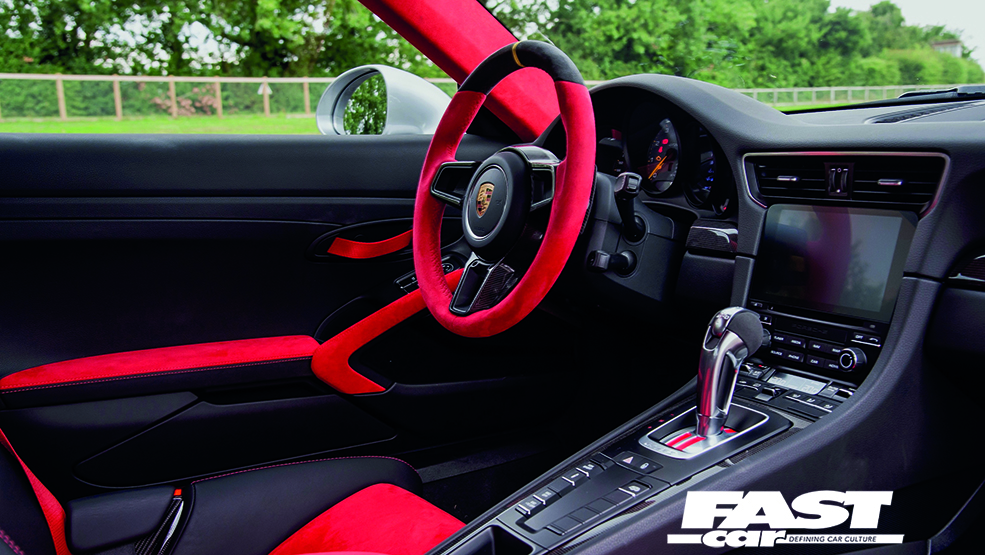
In fact, it’s just another typically comprehensive Porsche tuning job. The 3.8-litre flat six engine is the same as that found in the Turbo S but turned up to 11. Or 12. With bigger turbos, a weight saving titanium exhaust, remapping and, crucially, a water-cooled intercooler, power now tops out at 691bhp, meaning a barely believable 182bhp per litre of capacity. It’s so much Porsche really did consider retaining four-wheel drive before the more deranged members of the motorsport department held sway. So, like every other GT2, the power goes rearward alone. On its way, it passes through a seven speed PDK gearbox; Porsche has made a lot of noise about RS equalling PDK which is why there is no manual option, but it’s also true that the 911 GT2 RS has over half as much torque again as the manual GT3 and I’d be surprised if Porsche had a version of its three pedal transmission that could handle the job.
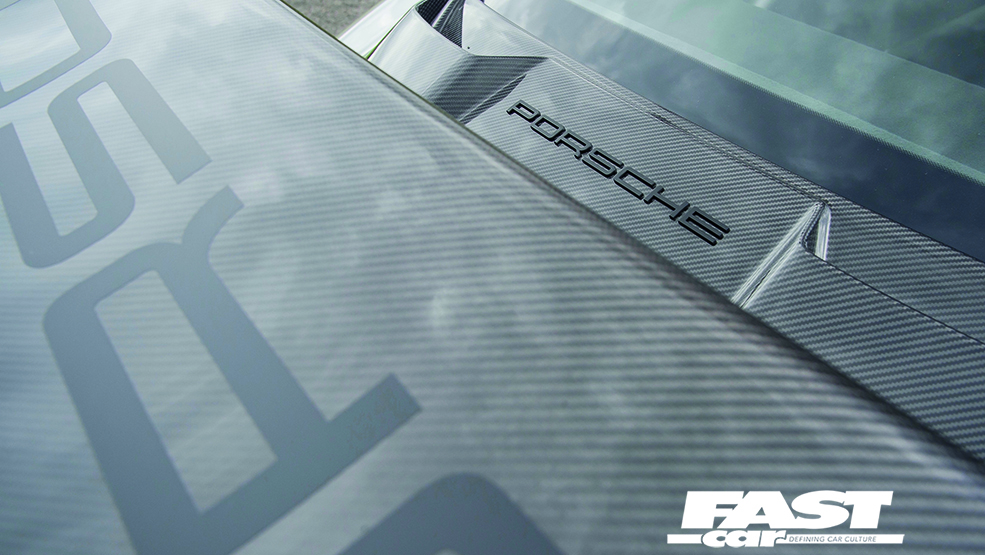
Wide boy style
Like the Turbo S, the 911 GT2 RS carries the widest of the three 911 body shapes and has its own unique suspension tune featuring stiffer springs, softer anti-roll bars and bespoke settings for the traction and stability systems as well it might with all that extra urge to contain.
Visually it is a continuation of the GT3 RS theme, but varied largely to provide additional air to areas that need even more cooling because of the car’s extra power and then to reject that air once it has become hot and useless. Even larger front inlets combine with Naca ducts on the bonnet to feed air into the radiators and oil coolers while the carbon vents at the rear of the front arches are even more pronounced. Likewise, the intakes in the rear arches are modified to account for the fact that, unlike the GT3 RS, they have intercoolers to feed while the aero pack is topped off by another enormous rear wing, balanced up front by an even more pronounced splitter.
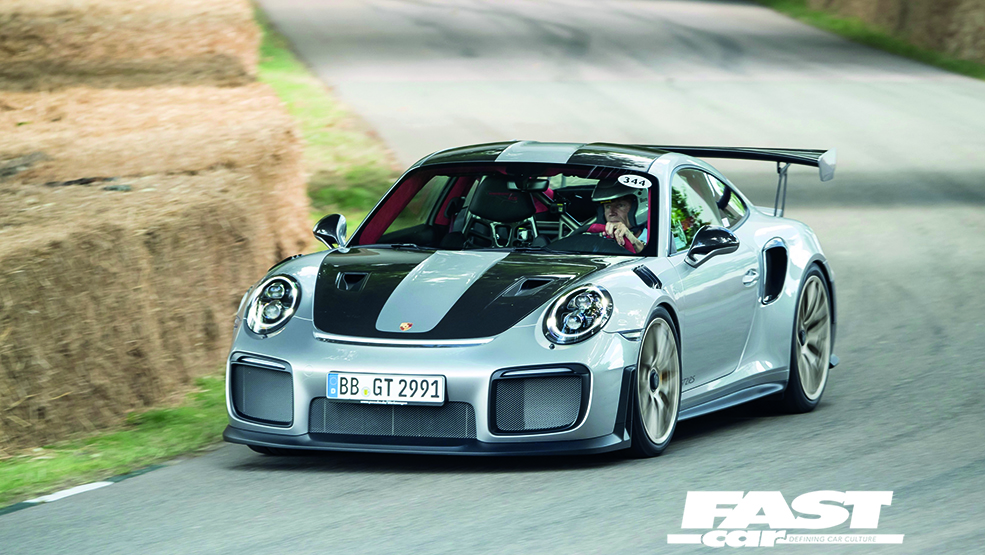
A similar level of detail has been levelled at keeping the GT2 RS as light as possible. It carries over the carbon fibre bonnet and bootlid found in the GT3 RS as well as its magnesium roof, but those wanting the lightest possible car can opt for a Weissach pack which offers magnesium wheels so light they might float away on a passing breeze, a carbon roof, carbon anti-roll bars (yes, really), and even a carbon steering wheel cover and gearshift paddles. Together they save a significant 40kg and drop the weight of the car to just 1440kg, making it only a fraction heavier than the GT3 RS, not bad when you consider there’s another 200bhp under your right foot. Oh, and don’t forget, it has a titanium roll cage too.
Even so as you walk up to it, open a door and descend into its depths, the experience is very similar to that offered by a GT3 RS, red-rimmed suede steering wheel aside. At least, that is, until you turn the key.

It sounds angry. Positively livid in fact, presumably because you’ve had the temerity to raise it from its slumbers. What’s more it was a noise I’d heard before, when I was a kid watching the 935s destroying the field at the Silverstone Six Hours in 1978. The noise scared me then, and it still does.
But I have a few hours in which to ease myself into the experience before I get my own chance around Silverstone. And the first impressions are none of those you might expect. Instead they concern how easy, tractable and comfortable this car is to drive, even on crumbling British back roads. Those enormous front Michelin Pilot Sport Cup 2 front tyres hunt about a bit over some of our more pronounced cambers, but not dramatically so. And the ride quality is sensational given what kind of car we’re talking about here. Even with the optional Weissach pack with its carbon bars, it feels firm but compliant, hard but not harsh. Honestly, and you’ll just have to take my word for it, you could use this as an everyday car, and it is my dear hope that at least someone does.
And for all its grumblings, the engine seems tractable enough, unreasonably so given just how much power is being wrung from its depths. It would be interesting to try it with a manual transmission, because I expect the PDK works hard to help ensure smooth progress at low revs, but with just two pedals it will chunter about at sensible speeds for as long as you like.
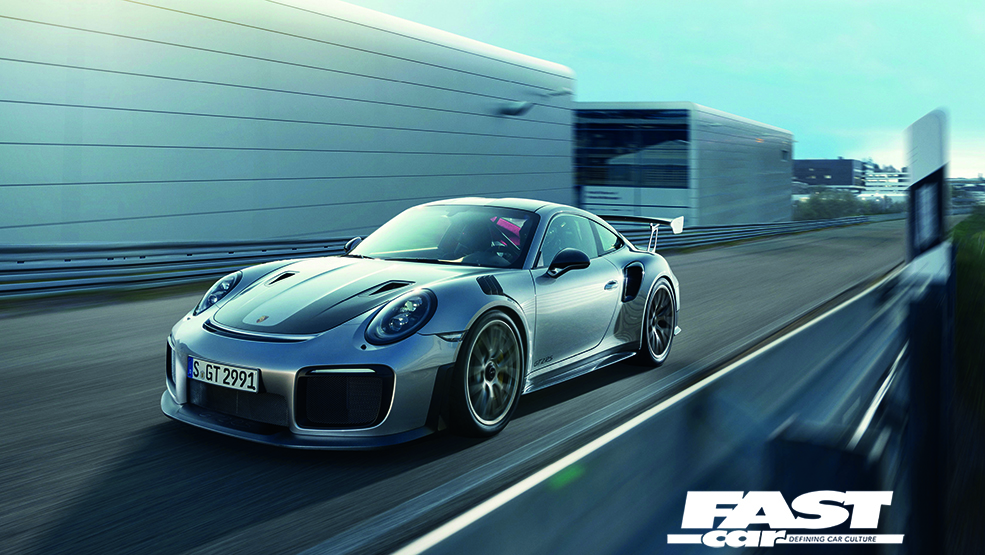
And sensible is an important word when it comes to driving this car in public. When the traffic clears and the road opens up, you might think an orgy of thundering exhausts, blurred arms and mashed pedals might ensue; but you’d be entirely wrong. The car is just too fast for that. Driving a GT2 RS on the road, almost any road I would hazard, is in fact an exercise in saintly restraint. Straights effectively cease to exist, your progress from one end to the other seemingly achieved by the rather cool trick of leaving out the bit in the middle. But even this is little more than a gentle jog for the GT2 RS. Anyone who genuinely tries to sprint it on anything less than a race track deserves all they have coming to them.
Road user friendly…
That does not mean the car cannot be enjoyed in public. You can savour the tack-sharp steering, the way the damping allows almost zero vertical body movement and, of course, more grip than you’d conceivably need while sharing the road with other users.
But anyone who’s only driven the GT2 RS on the road cannot possibly provide a full account of the car’s capabilities. To discover the rest of the story, we have Silverstone and the glory of the full Grand Prix layout on which to find more. And for once, I have time to ease myself into the experience.
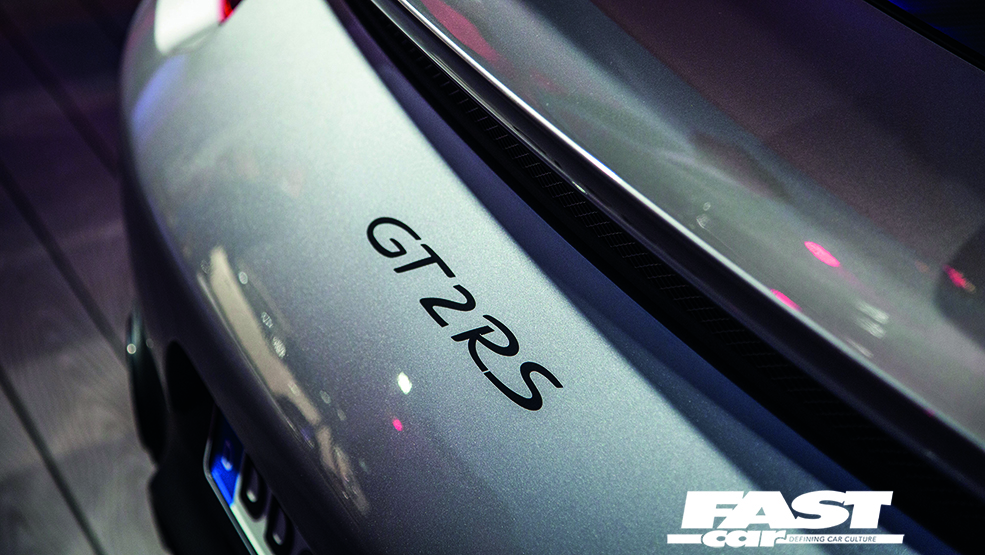
So, at first we just go at medium pace, which means accelerating quite hard but changing up early, sparing the brakes and being conservative with apex speeds. Today is a normal track day and as is normal on this very expensive circuit, it’s full of extremely quick machines. All of which get in the way. The circuit becomes an obstacle course as you pick your way around Caterhams, Ferraris and other long slung slices of automotive exotica. And this is without trying.
It only takes a couple of laps for Michelin’s most uncompromising road tyre to get fully up to temperature and I’m not yet feeling as apprehensive about what’s to come. The car feels quite manageable in a way the old one was not. Is it just biding its time, waiting for its moment to throw me into the scenery as had its predecessor all those years ago? There was only one way to find out.
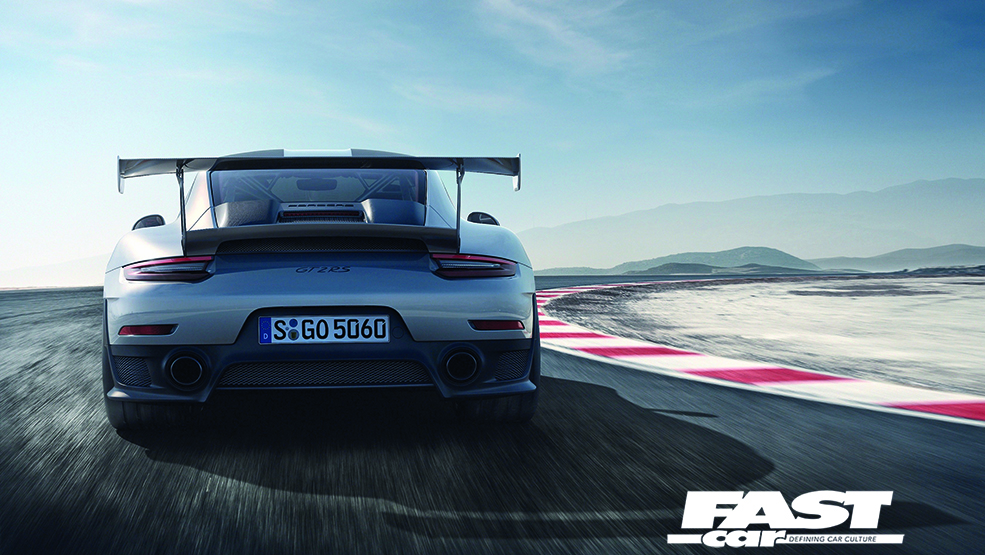
Fully lit, this car is a new level for Porsche. It’s not just the rate of acceleration that makes you involuntarily clench your buttocks, but its relentlessness. Anyone could get this much power from this engine by concentrating it all into a tiny power band, but the GT2 RS is fully on song at 2500rpm and it won’t pause for breath for another 5000rpm after that. If you know Silverstone, be advised it will blast past 170mph on the Hangar Straight with contemptuous ease and have you closing on 160mph before braking for Copse.
But that’s not the most remarkable thing this car can do. What takes your brain, puts it in a bag and boils it, is the car’s ability to cope with the forces placed upon it by the engine. Even by 911 standards, every one of which has always been blessed with the gift of traction, its ability to get out of a corner defies belief for a comfortable road car on street legal tyres. No, you can’t just flatten the throttle at the apex of a slow corner and expect the car to tolerate such cack-handed abuse, but if you approach the subject with a degree of understanding and a modicum of skill the amount of torque it will take is simply staggering. And it will not snap or bite, at least in the dry.
It’s hardly any less impressive on the way into the corner and in quick curves you can enjoy the genuinely rare experience of feeling proper downforce in a road car as it not only provides more grip, but greater turn-in stability too.
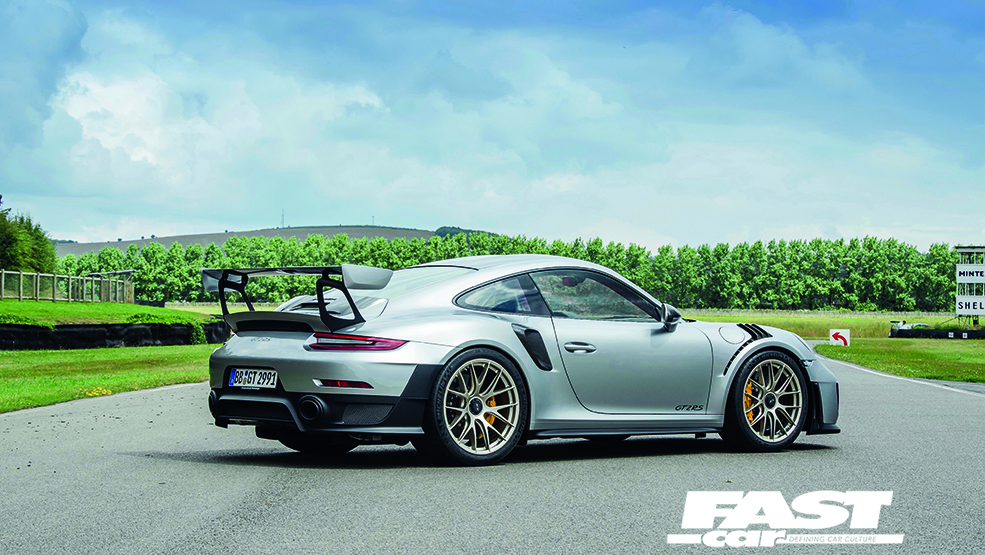
It’s not perfect. It would be hard to imagine a road car with better brakes, but you still have mentally to take account of the fact that while you approach any given corner far faster than in a GT3 RS, your ability to slow for it is similar. And I found the car’s natural mild understeer could quickly turn to oversteer towards the end of the high speed Becketts complex. Had that happened in the last GT2 RS I’d have wanted to go and hide in a dark room, in this one I noticed it but was so unbothered by it I felt no need to avoid it next time around.
In many ways, prising almost 700bhp from a 3.8-litre engine is the least of the GT2 RS’s achievements. It’s how it’s delivered and what the car then does with it that make this one of the world’s greatest supercars from Porsche or anyone else. It is of course pulverisingly powerful, but so too can it be handled with greater ease than I’d have ever believed given my prior experience of the breed. It’s not a doddle to drive nor even close, but I can tell you I drove it harder, further and faster than I ever did the previous GT2 RS and while it captivated and enthralled me, it did not scare me once.
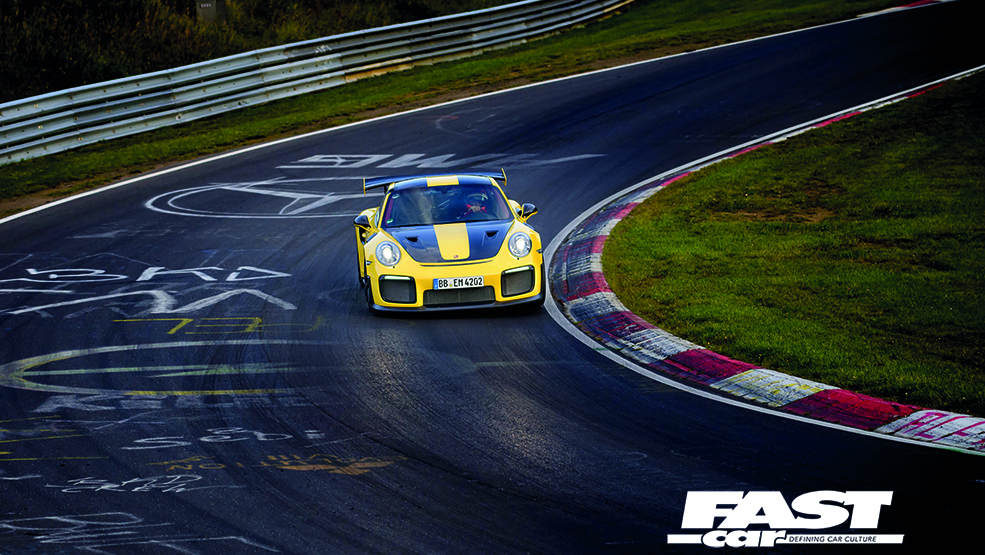
So now I understand where that Nürburgring lap time came from – it’s not so much the power as what it lets you do with it. And for the sheer excitement on offer, if given Silverstone, another ten laps and the GT2 or GT3 RS to choose between, I’d take the GT2 and for me that’s a first. It might not sound as good nor rev so high but when all is said and done, this is the most exciting Porsche I’ve driven, 918 Spyder included. And from a GT2 RS, you can’t ask for more than that.
Feature taken from Ultimate Supercar magazine. Words by: Andrew Frankel. Photos by: Porsche.

